SCHNELL SEGELN AN ANDEREN ENDE DER WELT
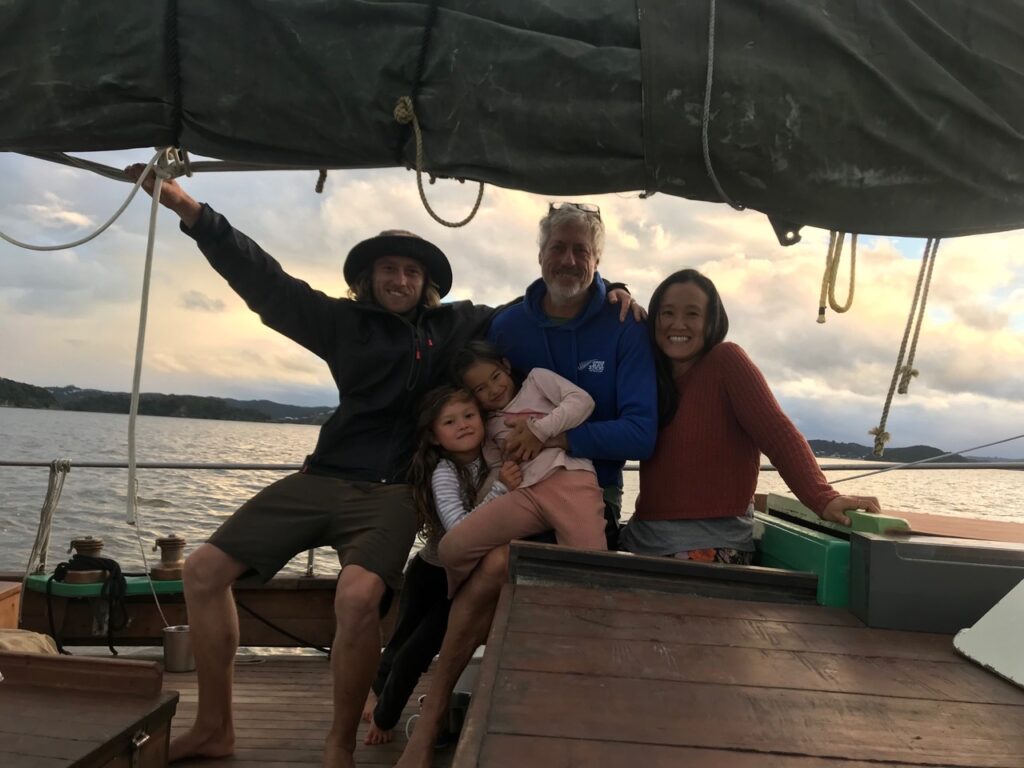 Hobart ist ein hartes Wort, bei dem jeder Segler sofort eisige Gedanken hat, weil er eben weiss, dass im Süden von Tasmanien ein anderer Wind sein Regime führt, zeitgleich Segler mit Südseegedanken in die Schranken weist. Der Blick auf die Breitengrade genügt, um dem Respekt die Vorfahrt nicht zu nehmen. Im Sydney – Hobart sind die Harten unterwegs, die sich hier und da auch schon mal die Zähne ausbeissen, oder ihre Riggs verlieren. Beim GGR war Hobart stets der eine ersehnter Stop-Over-Hafen, wo der eine odere andere Hero seine Wunden lecken konnte, auf dem Slip Muscheln zu kratzen, wenn er oder sie das nicht abseits in der Nebenbucht erledigen wollte, abseits der Behörden und fines.
Hobart ist ein hartes Wort, bei dem jeder Segler sofort eisige Gedanken hat, weil er eben weiss, dass im Süden von Tasmanien ein anderer Wind sein Regime führt, zeitgleich Segler mit Südseegedanken in die Schranken weist. Der Blick auf die Breitengrade genügt, um dem Respekt die Vorfahrt nicht zu nehmen. Im Sydney – Hobart sind die Harten unterwegs, die sich hier und da auch schon mal die Zähne ausbeissen, oder ihre Riggs verlieren. Beim GGR war Hobart stets der eine ersehnter Stop-Over-Hafen, wo der eine odere andere Hero seine Wunden lecken konnte, auf dem Slip Muscheln zu kratzen, wenn er oder sie das nicht abseits in der Nebenbucht erledigen wollte, abseits der Behörden und fines.
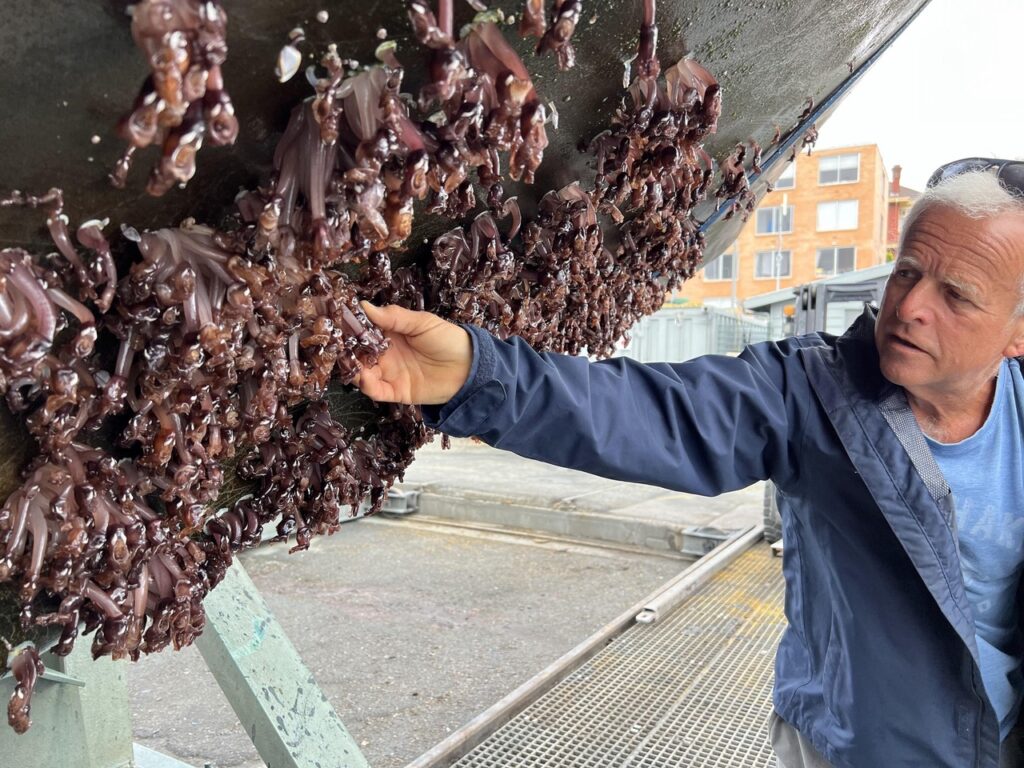 In Tasmanien jedenfalls leben viele Segler, die allesamt Respekt und Ehrfurcht vor den Elementen haben, von denen viele gerne Entlastung von der Sklavenarbeit des Steuern haben möchten. Für mich ein Traumrevier, weil ich mit wenigen Worten mein Evangelium erklären und Missverständnisse ausräumen kann. Es hat Segler gegeben, deren schlichte Mail nur nach Preis und Lieferzeit fragte, deren Schiffe ich bereits kannte. Einziges Handicap: Tasmanien ist für Logistiker ein Lottoasechser, weil dort Traumpreise möglich sind, zumal aircargo selten vorbei kommt … die Segler ergo in der Falle sitzen. Ein Stigma der besonderen Art.
In Tasmanien jedenfalls leben viele Segler, die allesamt Respekt und Ehrfurcht vor den Elementen haben, von denen viele gerne Entlastung von der Sklavenarbeit des Steuern haben möchten. Für mich ein Traumrevier, weil ich mit wenigen Worten mein Evangelium erklären und Missverständnisse ausräumen kann. Es hat Segler gegeben, deren schlichte Mail nur nach Preis und Lieferzeit fragte, deren Schiffe ich bereits kannte. Einziges Handicap: Tasmanien ist für Logistiker ein Lottoasechser, weil dort Traumpreise möglich sind, zumal aircargo selten vorbei kommt … die Segler ergo in der Falle sitzen. Ein Stigma der besonderen Art.
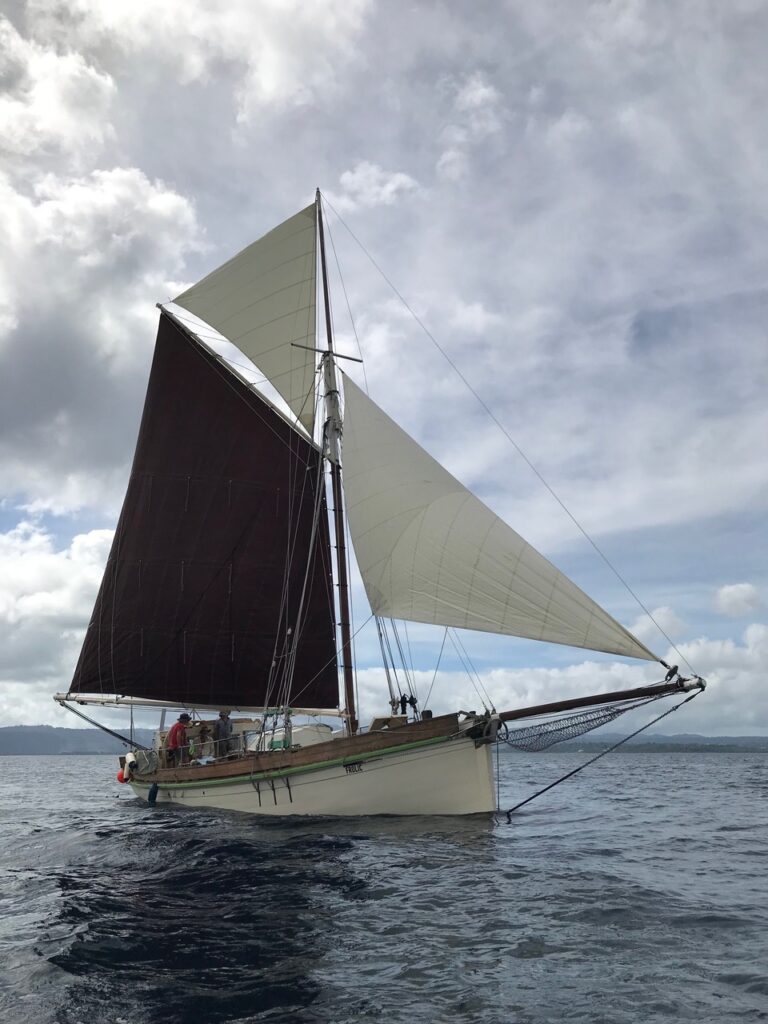
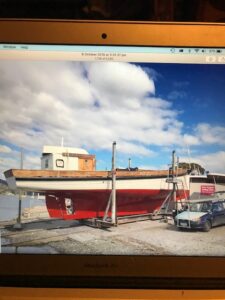 So lernte ich vor einiger Zeit John Rose kennen, habe ca 50 Mails mit ihm getauscht, und ihm am Ende eine PACIFIC für seine SV FROLIC, einem schweren Gaffelkutter aus dem Jahre ca 1870 verkauft. Das bislang älteste Schiff in meiner Agenda. Der Gaffelkutter wurde für mich zur Herausforderung in vielerlei Hinsicht. Die Frolic die zu segeln John als FROLICING bezeichnete, was so viel heisst wie HERUMTOLLEN, war mit komplizierter Radsteuerung über Getriebe und Drahtseile bis ins Steuerhaus ausgerüstet, weil die damaligen Berufsseeleute ja auch nicht gerne im Regen stehen wollten.
So lernte ich vor einiger Zeit John Rose kennen, habe ca 50 Mails mit ihm getauscht, und ihm am Ende eine PACIFIC für seine SV FROLIC, einem schweren Gaffelkutter aus dem Jahre ca 1870 verkauft. Das bislang älteste Schiff in meiner Agenda. Der Gaffelkutter wurde für mich zur Herausforderung in vielerlei Hinsicht. Die Frolic die zu segeln John als FROLICING bezeichnete, was so viel heisst wie HERUMTOLLEN, war mit komplizierter Radsteuerung über Getriebe und Drahtseile bis ins Steuerhaus ausgerüstet, weil die damaligen Berufsseeleute ja auch nicht gerne im Regen stehen wollten.
Jedenfalls wurden wir uns am Ende einig, John hat
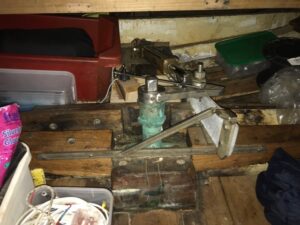 bezahlt, die Ware wurde zum Hamburg Airport gebracht und ging fliegen. Wenig später dann der ungehaltene Protest von John, der sich darüber beschwerte, dass er vor Ort Customs Fees und Gebühren zu zahlen hatte, was er ablehnte, weil er nicht noch einmal zur Kasse gebeten werden wollte. Ich habe die Sachlage mühsam zu erklären versucht, aber John hatte die Nase voll, ich habe am Ende vorgeschlagen, dass ich die Ware wieder nach Hamburg
bezahlt, die Ware wurde zum Hamburg Airport gebracht und ging fliegen. Wenig später dann der ungehaltene Protest von John, der sich darüber beschwerte, dass er vor Ort Customs Fees und Gebühren zu zahlen hatte, was er ablehnte, weil er nicht noch einmal zur Kasse gebeten werden wollte. Ich habe die Sachlage mühsam zu erklären versucht, aber John hatte die Nase voll, ich habe am Ende vorgeschlagen, dass ich die Ware wieder nach Hamburg
zurücknehmen werde und den Kaufpreis zurück überweisen wollte.
Ich habe von John nie wieder etwas gehört, die PACIFIC wurde nicht retourniert.
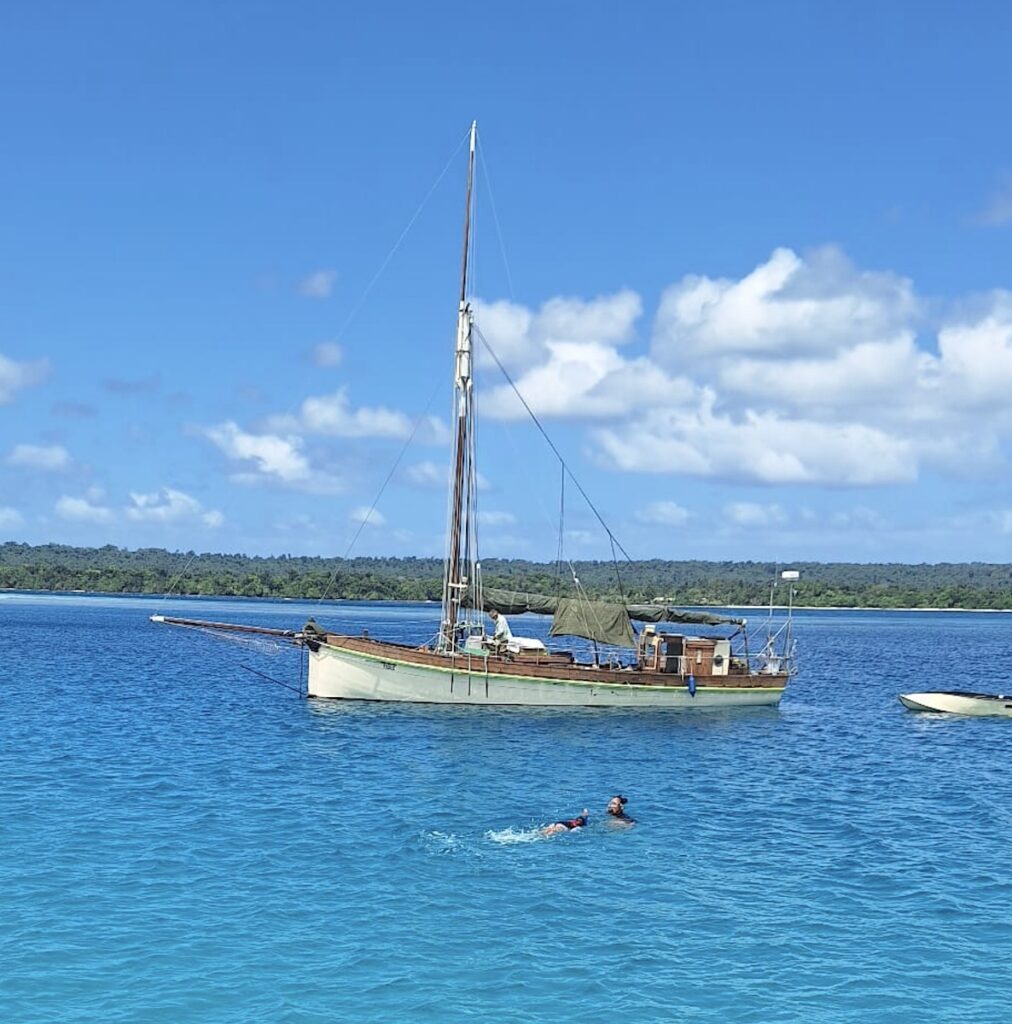 Am 09.09.2025 allerdings habe ich diese Mail bekommen:
Am 09.09.2025 allerdings habe ich diese Mail bekommen:
Hello Peter, it’s definitely about time I give you some feedback.
Firstly, how are you keeping these days ?
Secondly, after having sailed from Tasmania to NewZealand, up around NZ, then to Vanuatu, using your windpilot 99% of the journey, it’s really been great, and it’s hard to imagine having done that without it.
Even though I ended up spending a lot more to have it delivered to Tas, it’s been a positive spend, and I thank you for the object, and your guidance along the way.
I have one question please, as I’ve been using the pilot a lot I can’t remember how much ‘play’ or looseness it had through the main pivoting shaft, but I’m thinking it might have more than it did ???
How much jiggle should there be ?
Kind regards John.
Minuten später meine Antwort:
Dear John,
how nice to hear from you … how would I yearn for some nice pictures of your beloved vessel on anchor in front of beautiful islands …which you have visited during the months behind certainly …
No worry, some play is essential to gain sensitivity over the long run … here the reason: any wind vane has to create some pressure to the main rudder mainly to effect lee rudder …. as any vessel will tend to head up into the wind on her own … so „lee play“ will never effect steering as the pendulum carriage is creating POWER to one side mostly.
We have had extremely heavy vessel of around 40 t.weight, running 3 times around the world … with no need to change any single slieve ..
If the pendulum rudder oars tends to vibrate a bit in the water behind the big rudder and the prop … you can easy / or even reduce to zero … if you slightly readjust the rudder in the rudder fork at lower end at about 1 cm only …. and overcritical balancing might be reduced or neclected.
I am impatiently waiting for some „ eyefood „
take care
Peter
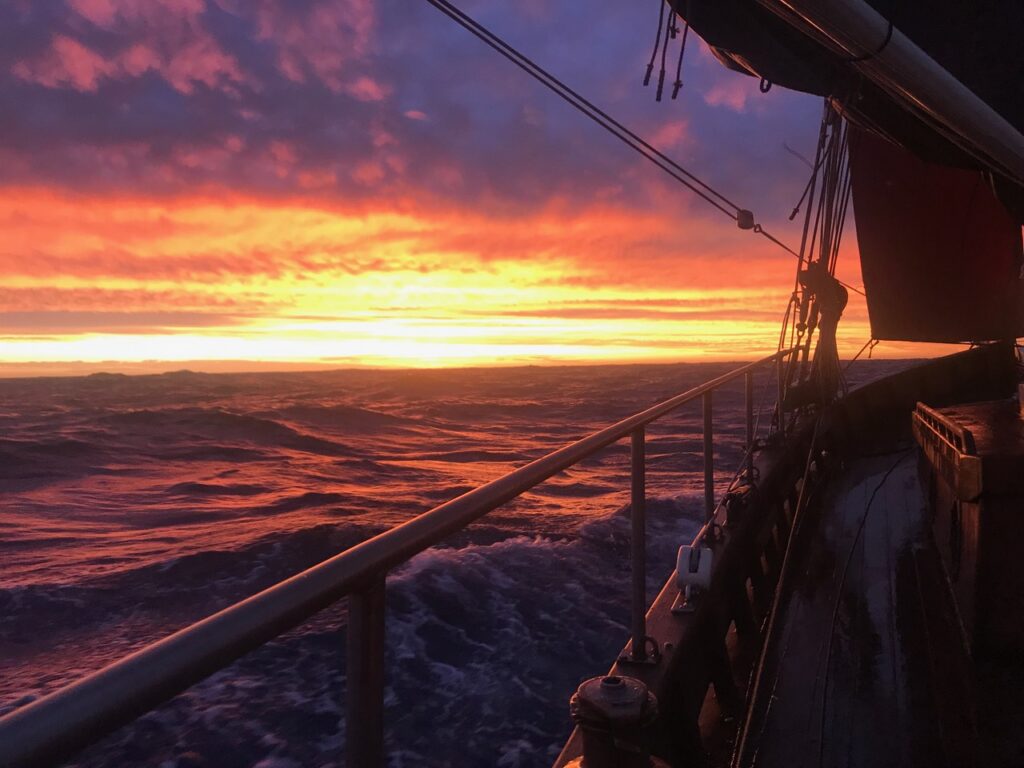 Minutes later John´s answer:
Minutes later John´s answer:
Ok, thanks for fast support, as usual, much appreciated. Yea the blue and green colours are a feast for the eyes/heart.
FROLIC is from Cygnet Tasmania!
She was built in Melbourne Australia around the 1870’s as a yacht and was converted to a fishing smack in 1899 to fish in Bass Strait if the Victorian coast.
She was the first commercial vessel fitted with an internal combustion engine in Victoria.
John Rose her current owner rescued FROLIC and rebuilt her over 10 years here in Cygnet.
One of the reasons for FROLIC’S longevity is she is planked in 2″ New Zealand Kauri!Wendy Burnett
My grandfather ‚William James Burnett‘ owned this boat and used her for fishing. He had an established fishing shed at BATTERY POINT TAS.
They fished Couta Scallops Crayfish to name a few, and they also smoked Couta at the old IXL Jones building in Hobart.Yes an old boat. There are a few accounts of the Frolic and all are probably inaccurate if it talks about what this boat was before 1899. The oldest sure account is from a newspaper article in 1899 from Melbourne Victoria, which says ‘ the old boat Mystery is changing its name to Frolic and heading to Tasmania’
I have over a 14 year project, off and on, replaced ever fastening and piece of wood apart from the main keel piece and the planking, bit by bit so as not to lose the shape.
We know most of the history from 1899. She was a fishing boat all those years, but no one know what she was before that, or where or when she was built. Her planks are NewZealand Kauri Pine which was common then as a traded timber, and the other timber suggest she was built in Victoria Australia.
It has become its original name !
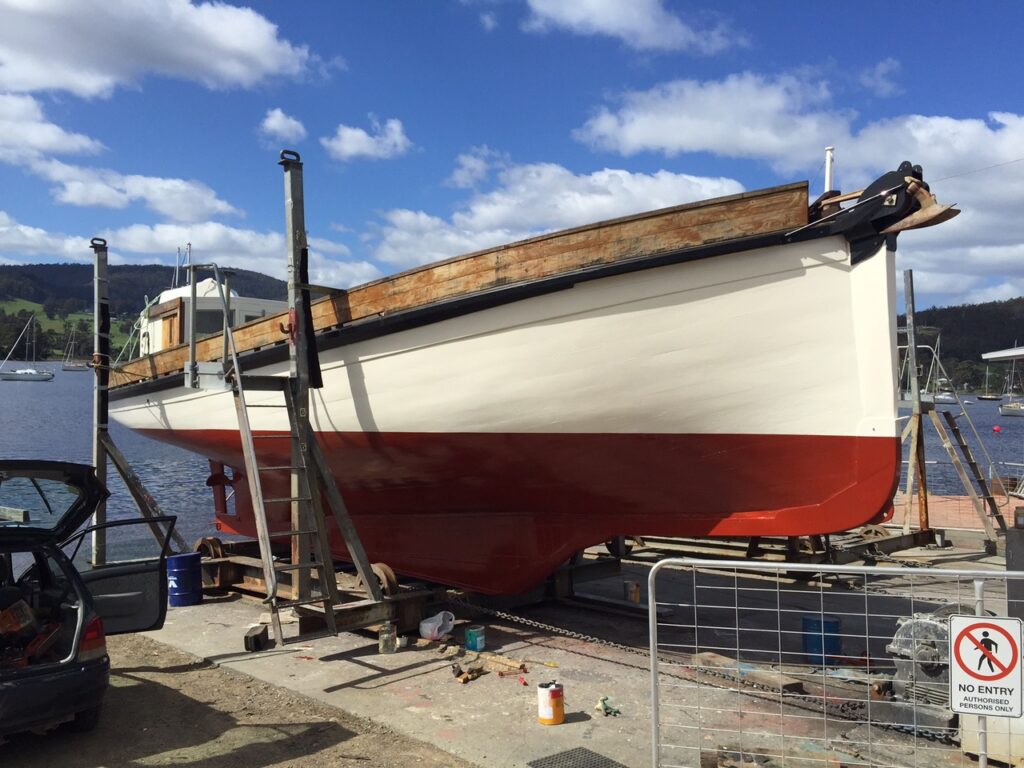 Meine Gedanken kamen ins Fliegen, denn John erzählte mir seine Geschichte:
Meine Gedanken kamen ins Fliegen, denn John erzählte mir seine Geschichte:
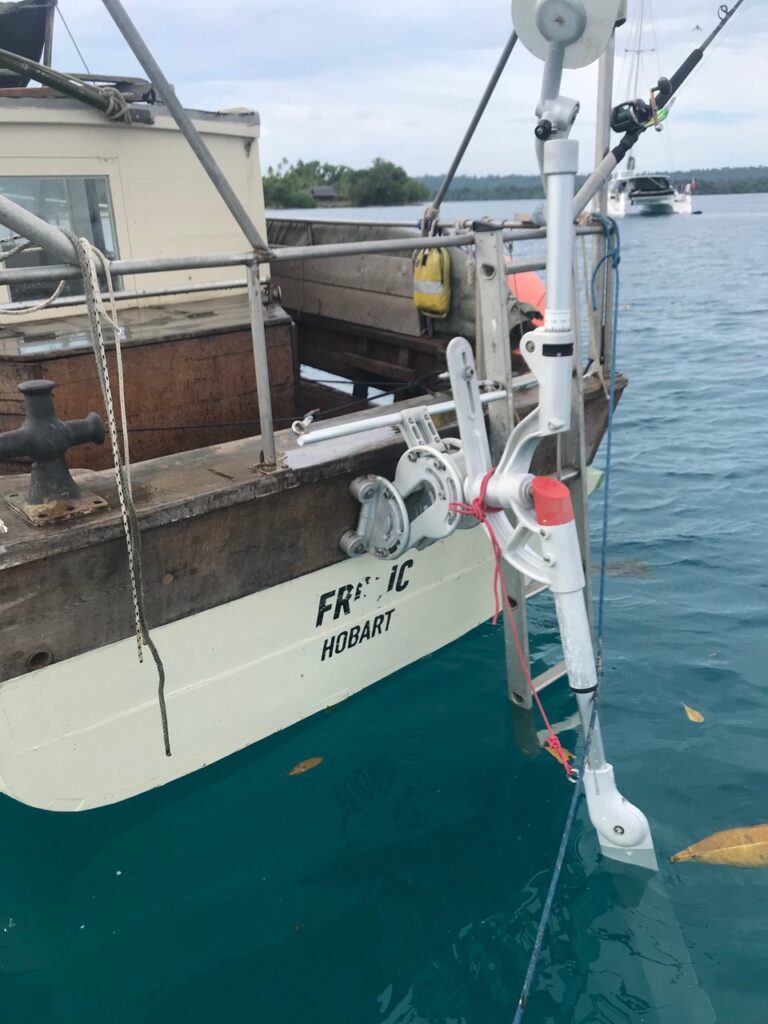
I wasn’t thinking to take on a timber vessel but was interested to see this boat advertised, propped up on the hard next to a river. At first sight the plumb stem captured me like an old dream rising to the moment. It was in a terrible state, having been out of the water for a couple of years, with only a foredeck and poop deck and side decks. open to the sky with a stripped out hull, looking sad indeed. the wet-well had been removed so she was weak through the guts. Pretty much every rib was rotten and the deck unable to be saved along with every deck beam. As it turned out the stem and stern timbers needed replacing too, so in effect all that was there was the shape, the planking, and the main keel to work with. So every fastening was replaced and a whole new boat built to those planks.
It needed corking to re-float it, which was a temporary job, which I did so badly that I nearly lost it when craned back into the river as water poured through every seem. I knew nothing of timber boats then. An old fellow told me to have a sack of sawdust ready to shakeout under the hull if it leaked too bad, which is what I did, and it saved the day, along with a friends help and two fire pumps throwing water out as it entered.
I reworked a broken down slipway in the countryside near where I lived and built a bush style roof over it and got to demolishing.
After five years or so, I had steamed in all new ribs and stringers and clamp and shelf and floor timbers and deck beams, and re-corked very carefully every seam. It was time to move the boat as time was up in that place. I had bought an old house in a town name Cygnet nearby, re-built an old heavy trailer with 12 truck wheels rolling, re-floated the boat, and dragged it home, and built a shed over it, and a work shed beside, spent another 9 years or so, dragged it back to the sea on that trailer, spent a couple more years working on the rig, and finally got to go for a sail.
This is the front of the story. The back story is one of many feelings, ups and downs. At the halfway point I didn’t believe in the project anymore. A few relationships passed, and the constant problems of designing and knowing what, how, which order, when, etc made the whole journey feel somehow quietly over dramatic.
I feel I was too proud and stubborn to quit, but finally there wasn’t much pride left as it took so long, and I suppose that’s ok.
It really was rewarding though to be sailing across the Tasman Sea on her maiden crossing, with my son who saw it all, to have the Frolic running like a witch, pressed with wind, with that shape of hull finding its way in rough seas so sweetly again, as it had for who knows how long. We put a couple of hundred miles under the keel on one of the 24 hour periods of that crossing, and she was perfectly balanced with two reefs in the main and the jib, running on the quarter, and 30 odd knots of wind.
This boat feels good and can really get along, and I must say that now I’ve been living and cruising with my partner and two young girls for the past 9 months, that the whole journey to date kind of makes sense.
The history of this boat is only known from 1899 till the present.
Prior to that it is yet unknown. The last bit of verifiable information
is in that year of 1899, which is a short article from a Melbourne newspaper which says ~ ‘ the old boat Mystery is changing its name to Frolic and heading to Tasmania.’
So she became her original name !regards from Tasmania
John of Frolic
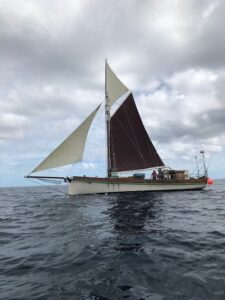



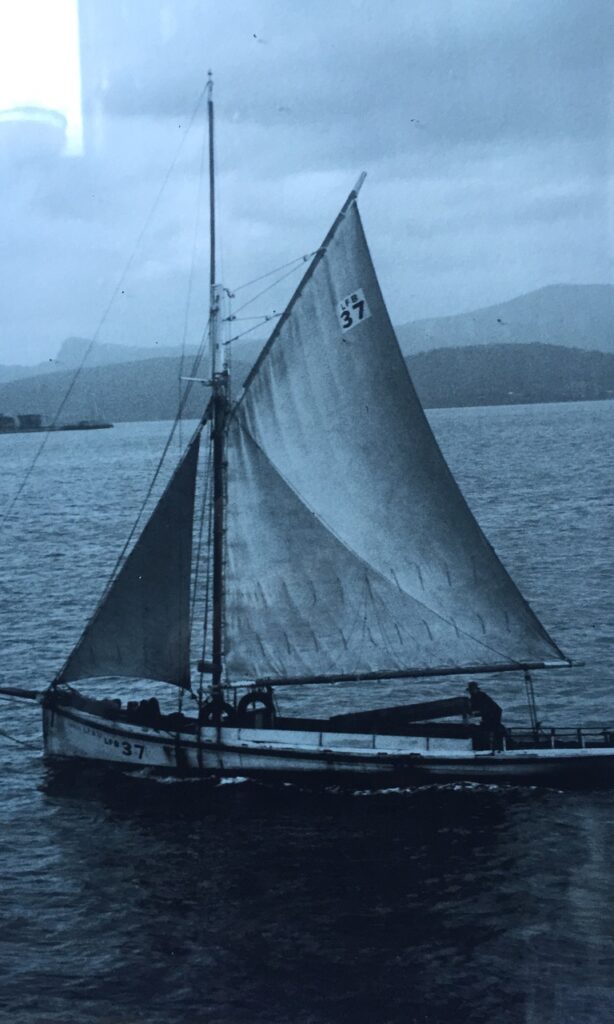


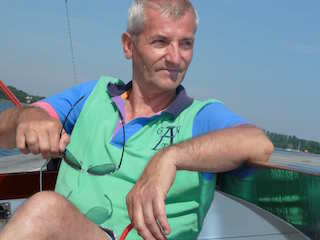

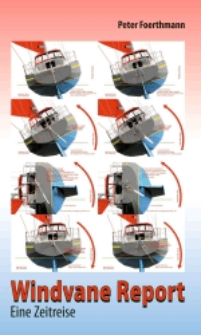


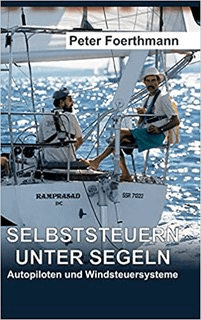
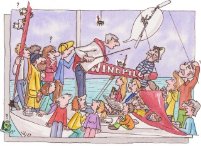
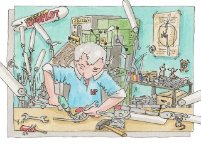

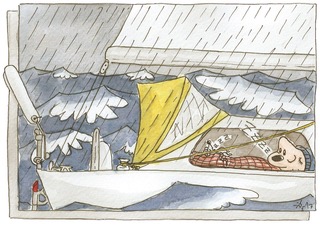
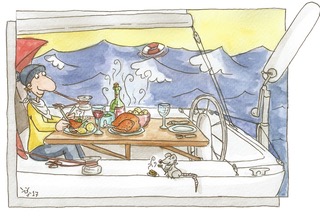
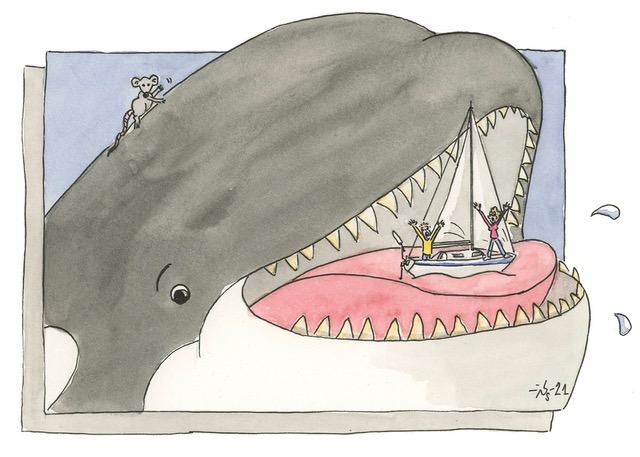
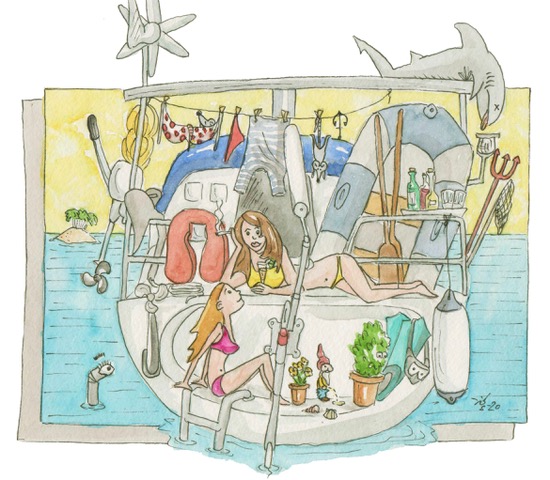
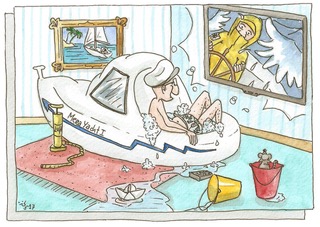
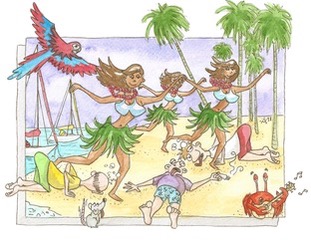
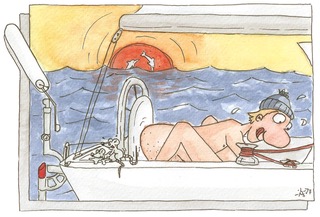
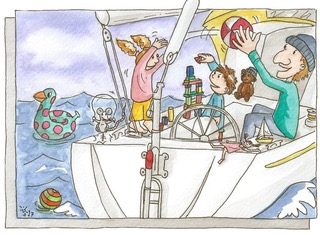
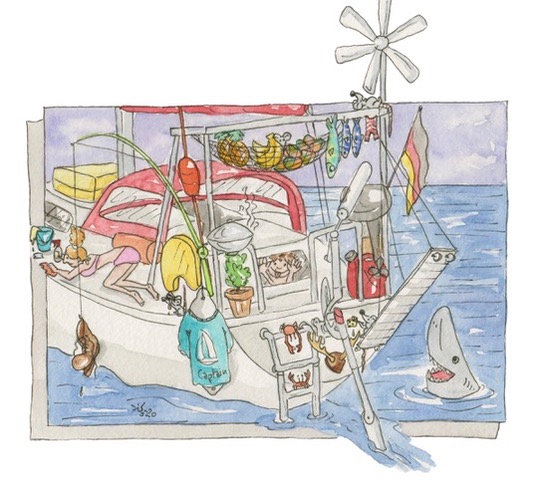

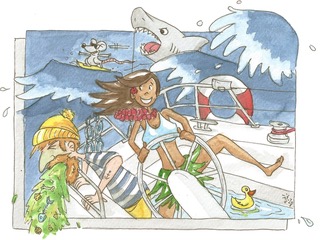

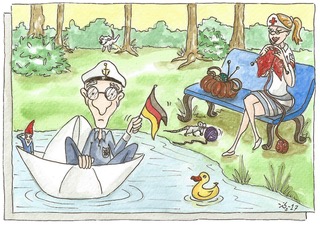
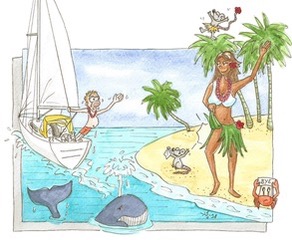
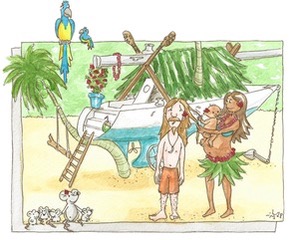
Und ich hoffe doch sehr, dass seine Entschuldigung für sein ungebührliches Verhalten
Euch doch noch einmal erreicht hat.